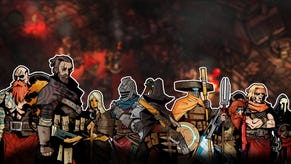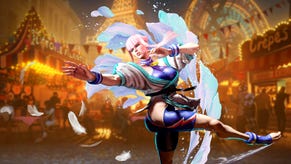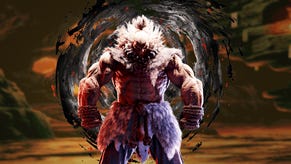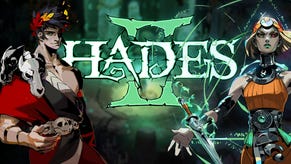Daily Classic: With Cotton, TG-16 Shooters Got Adorable
Success' whimsical arcade shooter was like the meet cute of shooters and anime.
This article first appeared on USgamer, a partner publication of VG247. Some content, such as this article, has been migrated to VG247 for posterity after USgamer's closure - but it has not been edited or further vetted by the VG247 team.
On very rare occasions, Americans have been granted a small glimpse into a game genre indigenous to Japan known as the "cute-'em-up." As you might gather from the name, cute-'em-ups are cute shoot-'em-ups. It's as self-explanatory as it is far-removed from the gaming American mainstream.
There are entire franchises of cutesy shooters that have never made their way to the U.S., most notably Konami's Parodius games. A parody of the Gradius games (geddit?), Parodius has been around for more than two decades, yet the closest we've ever come to a legit U.S. release for the series was the recent bizarre offshoot Otomedius, which replaced the lunacy and satire with sloppy mechanics and a sort of desperate, pandering sleaze -- sure, the shooting is awkward, but look at the girl dressed up as a half-naked Simon Belmont! Almost every shooter worth its salt has seen a cute, parodic, or super-deformed offshoot, even the noble Galaga (in the form of the wonderful Cosmo Gang: The Video). Yet you can basically count the number of cutesy shooters to have made it to America -- Fantasy Zone, Stinger, Ordyne, Keio Flying Squadron -- on one hand.
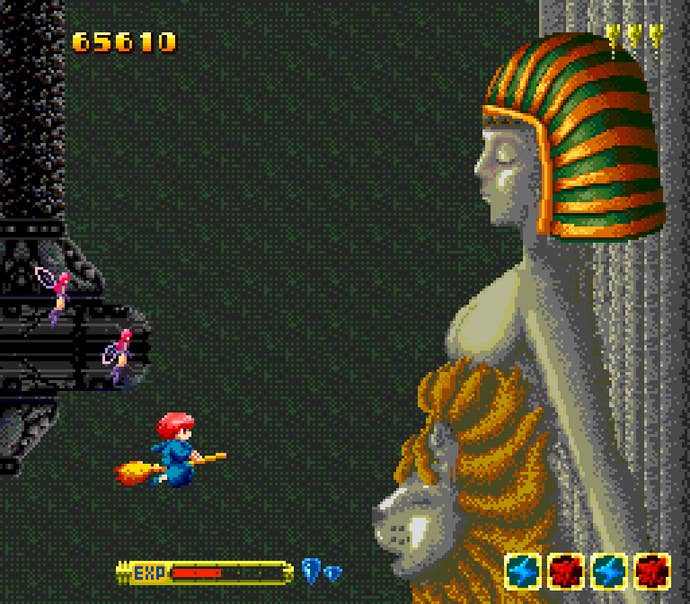
But few cute-'em-ups were quite as cute, or quite as seemingly unsuitable for manly American audiences, as Success' sugar-coated fantasy shooter Cotton: Fantastic Night Dreams... which makes the fact that it was actually localized all the more bizarre. After debuting in Japanese arcades in 1989, Cotton made its way to practically every non-Nintendo platform under the sun. And somehow, inexplicably, four years later, the Turbo CD version managed to escape the grasping gravity of Japan and ended up appearing as an English release.
Perhaps publisher Hudson was banking on sex appeal to sell the game. While there's nothing at all sexy about the titular protagonist, Cotton -- a childlike witch whose mop of pink hair suggests her name refers to cotton candy rather than the so-called "fabric of our lives" (TM) -- her faerie companion Silk features prominently on the box art, clad only in a revealing purple bikini. Of course, in-game, there's hilariously little of that to be seen; outside of the obligatory anime-style cut scenes, Cotton reduces its characters to chubby little sprites fighting against ridiculous-looking fantasy monsters, raging pumpkins, dopey-looking fish-men and so forth. Cotton isn't much larger on-screen than your typical tiny spaceship, and Silk -- playing the Option to Cotton's Vic Viper -- flutters around as little more than an abstract smudge.
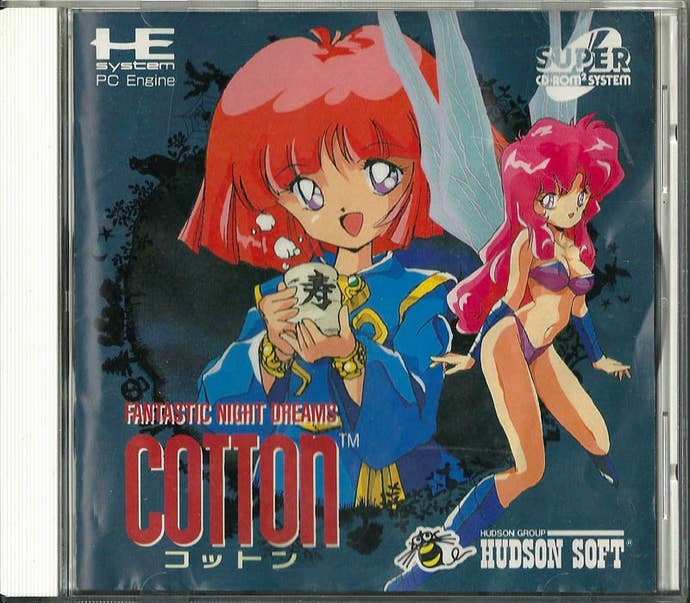
No, there's not much sexy about Cotton, despite the cover art. It was a quintessential cute-'em-up, which means the entire affair was drenched in pastel colors and populated by utterly adorable enemies. Visually, it made for a striking contrast to other TurboGrafx shooters, which usually went for a darker style -- technological dystopia or biological horror, that sort of thing. Cotton, on the other hand, had to do with a witch who wanted to gorge herself on candy and was determined to shoot down every cuddly, chubby harpy that got in her way.
Where Cotton did resemble the rest of the TG16 library was in its difficulty, which didn't feel at all like you'd expect from a pastel journey through faerie-land. Apparently searching for willow candy is serious business, because Cotton faced off against some unflinchingly brutal challenges along the course of her journey. The power-up mechanics worked like a hybrid of the standard Hudson shooter system and -- fittingly enough -- Twinbee's bells. But the harsh checkpoint system and small stock of lives made for a shooter hiding vicious fangs beneath its willowy, pillowy exterior.

The Cotton series would go on to inspire quite a few sequels, including a technological marvel called Panorama Cotton that pushed the Sega Mega Drive to remarkable heights of 3D graphics. Eventually, though, the series fizzled out about a decade later in the wake of an uninspired Dreamcast chapter, Rainbow Cotton, though the protagonist did show up in Success' wickedly difficult DS strategy game Rondo of Swords a few years back. Despite its relatively short life, the Cotton series seems to have been remarkably influential. Developer Quest created a shameless clone called Magical Chase a few years after the original Cotton's debut; interestingly, the Witch-class characters in the Ogre Battle series look an awful like Magical Chase's protagonist Ripple. The Cotton format was also adopted wholesale by Victor's Keio Flying Squadron, which was slightly less obvious about its pilfering by dressing its young heroine in a bunny costume (despite its medieval Japanese setting). And then there's Touhou, a rabbit hole far too deep to be spelunked within the parameters of this humble retrospective.
Despite somehow making its way to the U.S., the original Cotton appears to have been almost entirely forgotten by American gamers. No doubt its being a niche release on a niche add-on for a niche console didn't really do its sales many favors (though it certainly has helped the game's aftermarket value). Still, it's a fascinating curio: One of the few instances of an oddball sub-genre to make its way to America. It's also an artifact of a very specific time, with its decidedly '80s anime look and attitude. In a lot of ways, the cute-'em-up died through commoditization, as the idea of selling hardcore game genres by dressing them up with scantily clad girls has become more or less the standard for much of the Japanese games industry rather than the exception -- though the relative restraint demonstrated by Cotton (only one female character appears nearly naked rather than all of them!) has long since disappeared.


